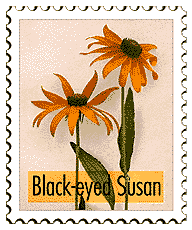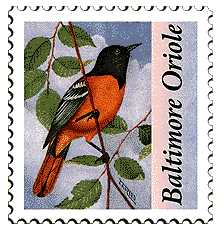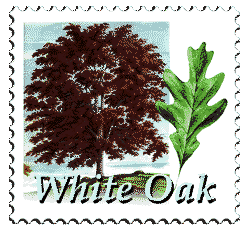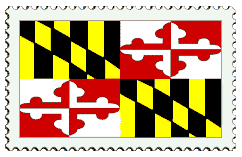
State Flower:
Black-Eyed Susan
The Black-Eyed Susan has been the official Maryland State Flower since 1918. This yellow daisy, or coneflower, is found in fields and along Maryland's roadsides throughout the summer.

State Bird:
Baltimore Oriole
The oriole's plumage of black and gold -- the same colors that represent the colors of Lord Baltimore's family (See Flag description below) -- led to its early association with the name "Baltimore." In 1698 the "Baltimore Birds" were among the "Beasts of Curiosity" sent from Maryland to grace the Royal Gardens in England. The Baltimore Oriole has been the official Maryland State Bird since 1947, although as early as 1881 special provisions were made for its protection.

State Tree:
White Oak
The White Oak at Wye Mills (also known as the Wye Oak) on Maryland's Eastern Shore represents the official State Tree of Maryland. More than 450 years old, it stands 100 feet tall with a branch spread of 165 feet.

State Flag:
The black and gold speedway checks represent the colors of Lord Baltimore's family. The red and white crossbones represent the colors of Lord Baltimore's grandmother's family, the Crosslands.

Famous Person:
H.L. Mencken
"Man is dowered with the capacity to invent imaginary worlds, and he is always making himself unhappy by trying to move into them. Thus he underrates the world in which he actually lives and so misses most of the fun that is in it."
"The Bad Boy of Baltimore," Henry Louis Mencken was born in Baltimore on September 12, 1880. By his own admission, he had a wonderful, loving childhood, "we were encapsulated in affection" he said of his youth, yet he became a sarcastic, unforgiving, unmerciful, brutal critic and biting journalist, lampooning American politicians and the society of his day. He was a literary critic and later coeditor of "The Smart Set," a publication with the policy, "to be lively without being nasty." He became one of the most influential American social critics of the early 20th century. Many journalists of his day, and long afterwards, tried to imitate his style. In 1948 he suffered a massive stroke which left him unable to read or write. He died eight years later.